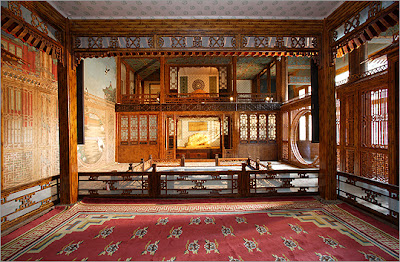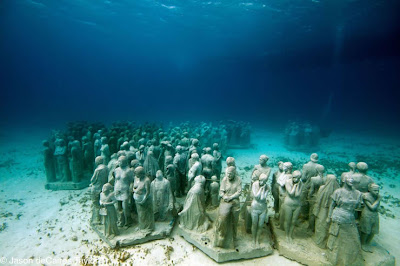 |
| An anatomical man showing which sign of the zodiac corresponds to each part of the body. 15th century. The Musée Condé, Chantilly, France. |
Poor Pluto. Unceremoniously demoted without even a farewell. We tend to be possessive about our skies, and if you don’t fit the right definition, well, tough (kind of like some people’s racial, religious, and cultural biases). I feel for Pluto as I’m going through a bit of an identity crisis myself. Recently it has been announced publicly that I am no longer a Sagittarius, but am under the sign of Ophiuchus. (This is pronounced "of-ee-yoo-kuhs".)
Actually, I had known about this constellation before. In my teens I turned to astrology to find answers to questions that were troubling me. Questions like: Who am I? What is my purpose in life? Why do I either have a zit on my face or green vegetable matter in my teeth when approached by a cute boy? I never found the answers in astrology, but fortunately a cute boy looked beyond the zits and greens and married me. (He is a Southerner, which may explain his predilection for greens.)
The belief that there is a connection between the world around us and humans, and that our lives are influenced and affected by it is an ancient one. Besides astrology, the world has looked for portents in stones, animals, and a variety of things and places. Even physiognomy, the study of facial features, was once a respected science. The search for omens certainly pertained to the skies, and it must've been a wonder to ancient humans to look up and try and figure out what was going on up there, especially as they noticed things moved.
 |
| 16th century woodcut of the signs of the zodiac. |
Astrology and astronomy came from the same study. Astrology was the interpretation of celestial objects, their movements, and phenomena. Astronomy was at one time the attempt to predict celestial events. Astronomy is now a full-fledged science, while astrology is at best a pseudo-science. However, many still believe in astrology, but only when it's done by a skilled and knowledgeable interpreter.
Astrology was used in ancient times to seek the fate of important matters of state, or of rulers. The ancient Greek astrologer and astronomer Ptolemy laid the basis of the Western astrological tradition, and the planets, houses, and signs of the zodiac from his works have changed little today. It wasn't until Alexander the Great conquered Egypt that the Hellenic influence changed Alexandrian astrology, and the use of astrology to plot personal horoscopes began. Arab astrologers took it up and revived the learning of the ancient Greeks. The Arabs greatly added to the nascent field of astronomy, naming many of the major stars in the process.
 |
| Scenographia Systematis Mvndani Ptolemaici The Ptolemaic system depicted by Andreas Cellarius, circa 1660. |
In the Middle Ages astrologers were called "mathematici". A "mathematicus" denoted a person proficient in astrology, astronomy, and mathematics. The practice of medicine was also dependent on astrology, so early physicians learned it as well.
 |
| God the Geometer, circa 1250 from The Frontispiece of Bible Moralisee Codex Vindobonensis 2554 in the Österreichische Nationalbibliothek. |
During the Renaissance, many individuals who we now credit with refuting (refudiating?) astrology were astrologers themselves, such as Galileo Galilei, Tycho Brahe, and Johannes Kepler. However, most medieval and Renaissance astrologers practiced palmistry, using astrology as back-up for their findings. Kepler famously referred to astronomy as the wise mother and astrology the foolish daughter, and said that the existence of the daughter was necessary to the life of the mother. It was the interest in astrology that fueled the study of astronomy.
Ophiuchus, whose name in Greek means "serpent-bearer", was one of the 48 constellations listed by Ptolemy, in the 2nd century. It's earliest mention, however, is in Aratus, who was referring to the lost catalog of Eudoxus of Cnidus from the 4th century BCE. In antiquity, Ophiuchus and some of its fixed stars were used by astrologers as "extra-zodiacal" indicators, meaning significant celestial phenomena that was outside of the twelve signs proper.
 |
| Illustration by Kepler from his book De Stella Nova in Pede Serpentarii ("On the new star in Ophiuchu's foot") "Kepler's Supernova" is marked with an "N" circa early 1600s |
In 1930, the IAU (International Astronomical Union) defined constellation boundaries. Because Ophiuchus sits behind the sun between November 29 and December 17, it has been used on occasion as a thirteenth sign. That idea originated in the 1970s and even Cetus - a constellation known as "the whale" today - was added as a fourteenth sign. Cetus was a sea monster in Greek mythology, and in ancient Mesopotamia was identified with Tiamat, the primordial cosmic female principle (and sea monster!)
 |
| Constellation of Cetus Sir James Thornhill, 1729. |
So, really, there's nothing new under the sun (and stars), and this new zodiacal craze will soon be forgotten and join all the departed crazes that have been born and have died since the beginning of humankind. And all of us Sagittarius types can get back to horsing around.
***************
All images, unless otherwise noted, courtesy of Wikipedia.
*******************************



































